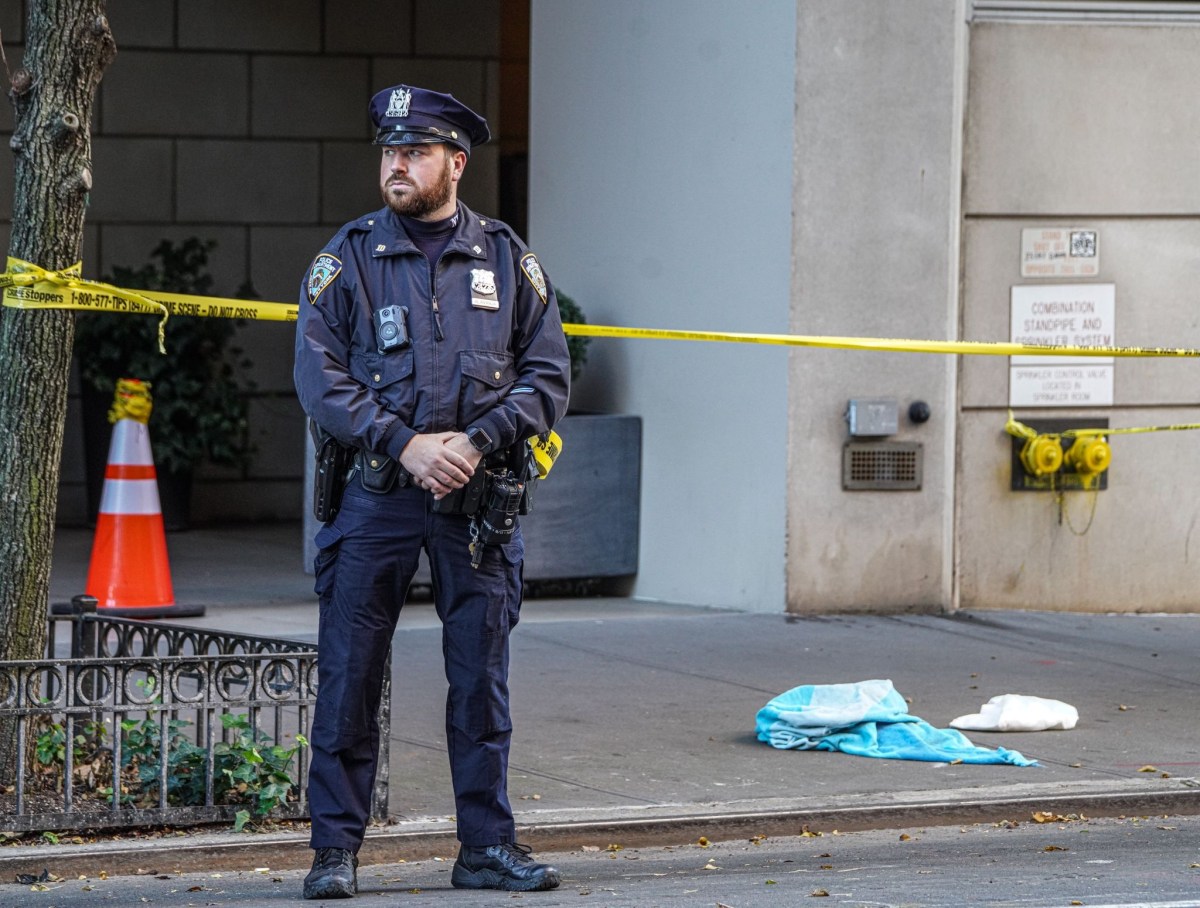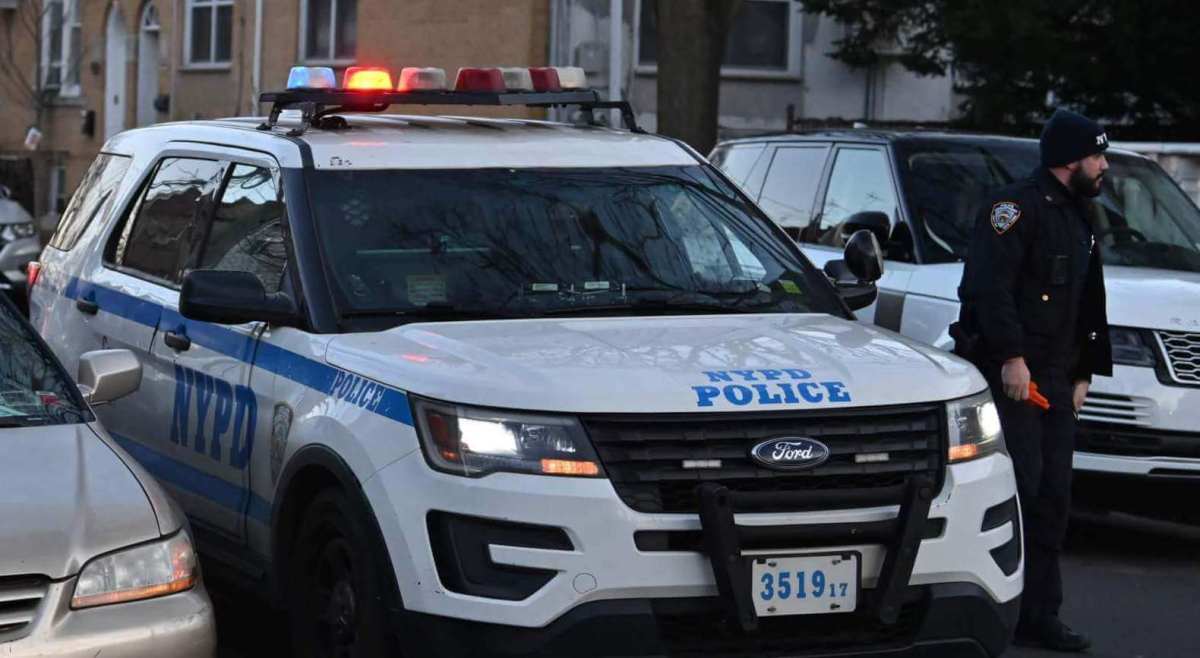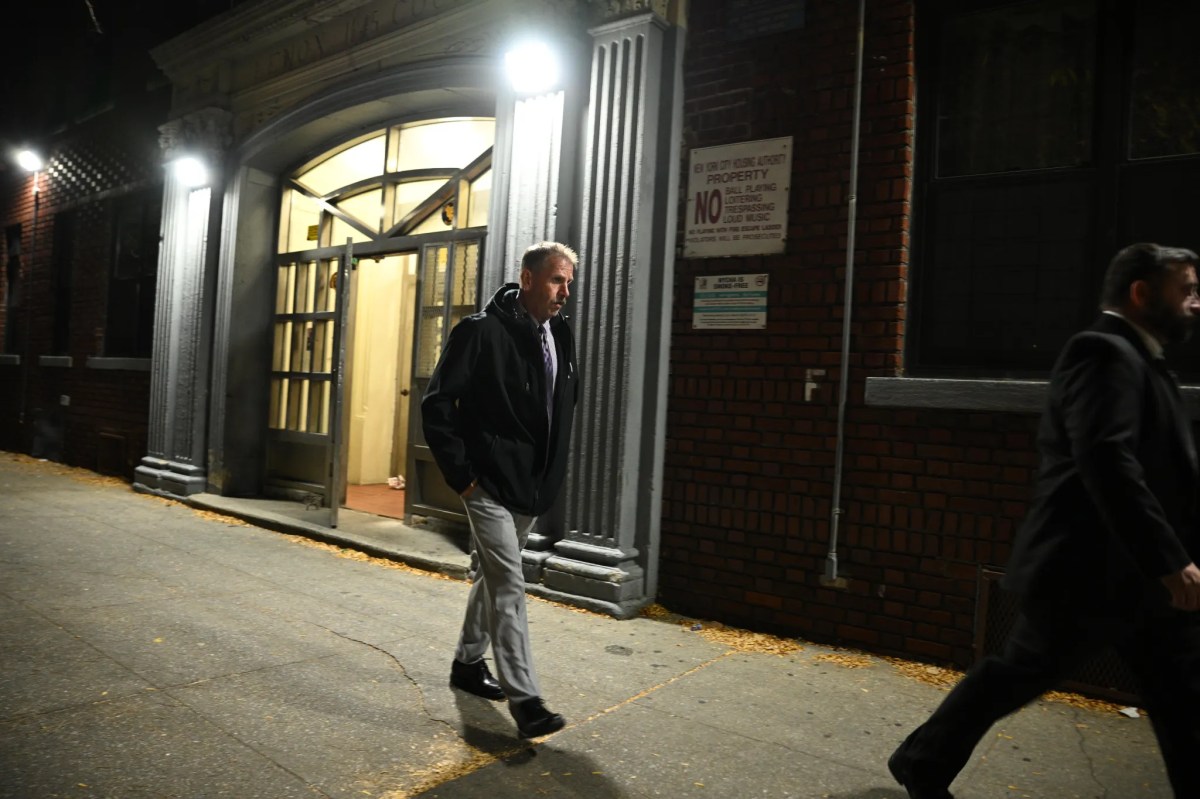ROCHESTER, New York (Reuters) – People who know Silvon Simmons call him “Tugg,” a nickname his parents gave him after he pried apart the slats of his crib and squeezed his way out. Now, as he stood accused of trying to kill a cop, his fate was in the hands of 12 strangers.
It was October 26, 2017, and jurors filed into the Monroe County courtroom in what seemed to Simmons like slow motion. Some caught his gaze and quickly looked away.
Now 36, Simmons had put everything on the line for this moment. He had refused a plea deal and spent 18 months in jail awaiting trial, even though losing could mean life in prison.
His body still carried two bullets from the night in April 2016 when a Rochester police officer shot him three times from behind. The cop, Joseph Ferrigno, insisted that Simmons fired at him first. Ferrigno was not wounded in the encounter.
“Would the foreperson please rise,” the clerk said. “In the matter of the People of the State of New York versus Silvon Simmons, as defendant, in the first count in the indictment, attempted aggravated murder, how do you find the defendant, guilty or not guilty?”
“Not guilty.”
Three more charges remained. But Simmons’ relief was so palpable, it looked as though he might faint, one juror told Reuters.
Count 2: Attempted aggravated assault of a police officer. “Not guilty.”
Count 3: Criminal possession of a weapon with the intent to use it unlawfully. “Not guilty.”
They didn’t believe these lying ass police! Simmons thought. I’m ready to hug all those jurors.
And then, Count 4: Criminal possession of a weapon not in the home or place of business.
“Guilty.”
Simmons was stunned. The count wasn’t as serious as the first two but still carried up to 15 years in prison. Judge Christopher Ciaccio ordered him freed pending his sentencing. Dizzied by what had just happened, Simmons couldn’t speak. Instead, he showed his acknowledgment by rapping his knuckles on the defense table.
He had hoped to clear his name. He came close. With no prior felonies, he’d probably get the minimum 3-1/2-year sentence, his lawyer Elizabeth Riley told him.
As it turned out, Riley was wrong.
“LIVES CAN BE RUINED”
While Simmons sat in jail awaiting trial, activists in this city in northwest New York renewed their efforts to expose and change police practices they considered unfair.
They would run into the same obstacle Simmons had: a blue wall. Backed by a strong police union and state labor laws, police in Rochester had fended off efforts since the 1960s to give community members more say in how officers are disciplined and how they do their jobs.
As the Simmons case played out, community members championing change would initiate the strongest drive yet to gain substantial civilian oversight of the police department. Success would mean clawing back power the city lost to the union during decades of labor negotiations and legal battles.
Rochester’s city council is now fighting the union in court over that effort. If it wins, the case could set a legal precedent for other municipalities in New York – and serve as a national model for civilian oversight.
In February 2017, almost a year after Simmons was shot, advocates issued a study using Rochester Police Department data on investigations of 1,173 civilian complaints that alleged excessive force. The study found that the department faulted officers in just 3% of cases – and fired none.
The authors contended that the Locust Club, the police union, essentially controlled how discipline was handled through its contract with the city.
“Police policing police is codified,” the study concluded. “Lives can be ruined by a single decision of a police officer. Yet the police are not accountable to the public who pay their salaries.”
“HOW POWERFUL ARE WE?”
That conclusion could not be more wrong, said Michael Mazzeo, president of the police union. Discipline is decided by the chief, who serves at the pleasure of the mayor and is susceptible to political influence, he said.
“I hear all the time how powerful the union is, but I can’t get someone hired, and I can’t prevent someone getting fired,” Mazzeo said. “So how powerful are we?”
Mazzeo said the study relied on faulty and incomplete information that led to flawed conclusions. During the last 10 or 15 years, Mazzeo said, he was aware of at least 10 officers who retired or were fired after a department investigation.
Reuters could not verify Mazzeo’s tally. At the time of the Simmons trial, a New York law known as “50-A” barred the disclosure of police personnel files. This June, state lawmakers repealed 50-A in an effort to improve accountability and trust in police. Some unions are fighting the disclosures in court.
In examining 100 police union contracts in some of America’s largest cities, Reuters found that officers in almost half of them, including Rochester, don’t need judicial intervention to keep certain personnel files secret. Their contracts mandate that police departments purge or seal officer disciplinary records, in some jurisdictions within six months.
That makes identifying troubled cops difficult for police chiefs who want to retrain or dismiss them, and for federal authorities seeking to investigate patterns of abuse within a police department.
Scores of cities across America have tried to exert more authority over their police. But they have been stymied, largely by obstacles beyond their control: state labor laws that govern collective bargaining. In most states, such laws and court rulings bar cities from making changes without union approval.
As Rochester’s leaders considered how and whether to move forward, Silvon Simmons prepared to return to court for sentencing.
“IT DOESN’T MAKE ANY SENSE”
Riley, his public defender, had found the jury’s verdict perplexing. Jurors had decided that Simmons was carrying a Ruger pistol the night he was shot by Officer Ferrigno. The pistol, police said, was found feet from where Simmons lay bleeding. Riley struggled to understand the jury’s conclusion.
Neither Simmons’ DNA nor fingerprints were on the gun or on an empty shell casing inside the Ruger’s chamber. A trace on the pistol found no link to Simmons. Searches of his car, his house, the Impala he rode in the night he was shot all failed to turn up anything of significance.
In their first public comments, several jurors told Reuters that the gun possession verdict was a compromise to help Simmons avoid a worse fate. When deliberations began, they said, the jury was split roughly along racial lines over whether Simmons, a Black man, had tried to kill Ferrigno, a white officer.
Ultimately, the jurors said, they didn’t believe Simmons had fired at the cop. But they were confused about the origins of the gun that officers said they found near Simmons.
From the outset, Ralph Hay, a General Motors machinist serving on his first jury, said he knew Simmons hadn’t tried to kill a cop in his own backyard. Not with his family inside the house, and not with a gun that, according to cops, had just one bullet. “Are you asking to die?” Hay, one of three Black jurors, told Reuters. “It doesn’t make any sense.”
Robert Marcell, a retired operations manager for the company that made Rochester famous, Eastman Kodak, said he believed Ferrigno had been startled by something, but not by a gunshot.
“Not to say he was lying,” said Marcell, one of the eight white jurors, “but he was mistaken.”
Testimony by another Rochester officer, Sam Giancursio, “about having a bullet go past his ear was kind of unbelievable,” Marcell said. “The story just didn’t hang together.”
Marcell said the jury included at least two gun owners who understood firearms. They convinced several others that the Ruger – with an empty casing in the chamber – had not been fired that night.
“WE WERE PISSED OFF”
The failure of the police to find a bullet from the Ruger added to the skepticism. The thinking was that Simmons threw the gun down and ran away, Marcell said. “I don’t think the gun went off.”
Other jurors had problems with that notion: If Simmons had tossed the gun, why wasn’t his DNA found on it? And why hadn’t authorities tested his shirt or palms for gunpowder residue, as Simmons requested?
“We were pissed off as citizens that this guy was pleading to have the gunshot residue tested, but it wasn’t done,” said Joseph D’Angelo, a white lawyer who served on the jury. “That was huge for us, the fact that there was no physical evidence.”
Jurors also lost confidence in evidence from ShotSpotter, an acoustic detection company under contract with the Rochester Police Department that reported picking up the sounds of five gunshots, Marcell said.
“The more we peeled away the layers of the onion,” he said, “the harder it became to believe.”
ShotSpotter revised its analysis of the sounds it recorded that night several times after hearing from Rochester police. Neither the company nor the police department would discuss the findings with Reuters.
A JURY’S BARGAIN
Jurors considered the possibility that the gun was planted, said D’Angelo, who does research for Westlaw, the legal information service owned by Thomson Reuters. But, in the end, he said, they dismissed the idea as just “too conspiracy-like.”
“We couldn’t figure out how the hell the cops could have planted it,” D’Angelo said.
So, how did the gun get there? Some jurors believed Simmons must have brought it. In the end, the group voted to convict Simmons on one of the lesser gun possession charges. They believed – wrongly – that it didn’t carry a sentence much longer than the 18 months he already had served. And after two weeks of testimony, some were exhausted and ready to go home and get back to work, jurors said.
Hay remembered it as a bargain to protect Simmons. He was afraid that if the jury couldn’t reach a verdict, the judge would declare a mistrial. If so, a new group of jurors would be asked to judge Simmons and possibly put an innocent man behind bars for life.
“It was definitely a deal,” Hay said. “I didn’t want to throw everything away. There was no telling that there was going to be people like us on the next jury.”
The verdict seemed to satisfy no one. Simmons faced years behind bars. And Rochester police were appalled that he had beaten the more serious charge of trying to kill a cop.
“RAGE IN MY HEART”
Police solidarity was front and center on January 11, 2018, the day of Simmons’ sentencing hearing. Rochester cops – Ferrigno and union head Mazzeo among them – packed the courtroom.
The week before, Ferrigno sent a letter to the judge. Simmons, he wrote, “acted like an outlaw and an uncivilized human being, and he could have gotten somebody killed or seriously injured.” Ferrigno urged the judge to show “no leniency” in sentencing Simmons.
“It puts pure anger and rage in my heart knowing that I was almost taken away from my family,” he wrote.
Judge Ciaccio also received more than two dozen letters on behalf of Simmons: friends, coworkers and relatives vouching for his character, his honesty, his love of family and his compassion.
None of the letters mattered. Instead, Ciaccio turned to the law.
Simmons’ lawyers had filed a motion asking the judge to set aside the conviction, arguing that there were grounds for reversal on appeal. Such motions are routine and typically dismissed. But Judge Ciaccio stunned those in the courtroom: The gun possession conviction, he ruled, was a mistake.
A “FUNDAMENTAL ERROR”
Ciaccio had come to view the ShotSpotter evidence as flawed, he explained. The Silicon Valley contractor claimed to have detected five sounds at the scene of the shooting that it identified as gunfire. “Most troubling,” the judge said, was that ShotSpotter had erased all but an eight-second clip of its audio recording.
Not knowing the sounds before and after made it impossible to determine that the impulses were gunshots, the judge said. “It may have been a series of shots, may have been a series of backfires, it may have been some other acoustic impulse.”
Absent that evidence, Ciaccio said, he did not believe the jury would have convicted Simmons. Therefore, he set aside the conviction, correcting a “fundamental error.”
In an order issued later, Ciaccio wrote that “the jury’s verdict reflected a nearly complete rejection” of the officers’ version of events. It “reflected a determination that the defendant did not point his gun at Ferrigno and fire it. No bullet whizzed by Giancursio’s head.”
A news camera captured Simmons’ shock – and heckles from the gallery packed with police. “You do the devil’s work,” someone told public defender Riley. The lawyer, who is much smaller than Simmons, put her arm around him as if to shield him as she heard someone warn, “Watch your back next time.”
The Monroe County District Attorney’s office declined to answer questions about its prosecution of Simmons, saying it does not discuss cases in which defendants are cleared and the records are, by law, sealed.
FIGHT CONTINUES
The Locust Club is again fighting on a familiar front. Last year, it sued the Rochester City Council in state court to prevent a new citizen Police Accountability Board from policing the police.
The board grew out of a movement that gained ground after the Simmons trial. At the urging of community groups, the council voted unanimously to hold a referendum on creating the board. With more than 75% of the vote last November, Rochester approved what may become the most powerful civilian oversight body in the United States.
Voters approved the creation of the all-volunteer, no-cops-allowed panel to investigate complaints against police and examine department practices.
The Locust Club sued. A state judge found in its favor, ruling that by empowering the accountability board to compel officers to testify and to discipline them, the city had violated the police union contract and state collective bargaining laws. Those laws require cities to negotiate with all public employee unions over any changes to employment conditions. The city council is appealing.
As they await a ruling, the taxpayer-funded panel’s first nine members have elected a chairwoman and begun developing policies for investigating complaints against officers and examining police practices.
CIVILIAN OVERSIGHT
Such boards can have enduring impact, policing experts say. They can alter the way police shootings and other violent encounters are investigated. The most significant changes: The accountability board’s investigators – not just fellow police union members – would be in a position to question officers about their decisions, and the board could overrule the findings of internal police inquiries.
“We will listen to our own witnesses, gather evidence and have a team of investigators working with us,” said Chairwoman Shani Wilson. “We would then make rulings based on that.”
The board would set the scope of its investigations, allowing for more thorough examinations of the tactics and policies at play in any encounter and, potentially, make recommendations for improvements.
Internal police investigations tend to focus narrowly on the final moments of a violent encounter, said John Alden, executive director of the Community Police Review Agency in Oakland, California. But civilian overseers, Alden said, are more likely to question why officers behaved the way they did in the crucial 20 to 30 minutes before a shooting.
Among the questions a review board might ask about an encounter such as Ferrigno’s with Simmons: Were there red flags in Ferrigno’s personnel record that suggested he needed more training – or that he shouldn’t have been riding solo in a car in the Lake Section of Rochester, where gunplay and violent crime were common? And were there steps he could have taken to de-escalate the encounter?
Alden’s agency in Oakland is one of the strongest civilian oversight boards in the country because it can issue subpoenas to compel police officers and other witnesses to answer questions.
SETTING A PRECEDENT
Rochester voters took that model a step further, giving their Police Accountability Board both subpoena power and the final say on discipline – a prerogative that has belonged to the chief.
“That’s a huge responsibility,” said Wilson, chairwoman of the new board. “We are setting a precedent for the rest of the country.”
First, the Rochester City Council must win its appeal.
The council is pinning its hopes on recent New York State court rulings that its lawyer argues give local elected officials the authority to decide how police should be policed. In each case – in Orangetown, Wallkill and Schenectady – unions challenged the municipality’s power to discipline officers. In each case, the union lost.
Other cities and towns are watching Rochester closely. If Rochester wins, municipalities across New York can attempt to apply the same legal strategy in pursuing police oversight, and the board could become a model around the state and the country.
In a brief filed in support of Rochester, the city of Kingston told the appellate court that it needs the power to enact changes by ordinance because its efforts to win at the bargaining table have been thwarted by an intransigent union. The cities of Middletown and Hudson also weighed in: If the Locust Club defeats the accountability board, they wrote, it would have a “significant and detrimental impact” on reform efforts across New York.
The Rochester City Council is pushing forward despite the mounting cost of the litigation. “We don’t have limitless funds, but we’re willing to invest some level of local resources,” Council President Loretta Scott told Reuters. “It’s just too important to stop now.”
A CITY’S FUTURE
Both union head Mazzeo and Simmons say they worry about what comes next for Rochester.
Mazzeo fears that the anti-police mood threatens public safety. Police spend years training for a complicated, dangerous and often thankless job, Mazzeo said, “and they will make mistakes.” But if the consequence of a mistake is to “simply just terminate people,” then a job that requires calm nerves and sound judgment will fail to draw the caliber of candidates needed.
“How is that doing a service to the public?” Mazzeo asked.
Simmons also fears for Rochester. He said he worries the Locust Club may succeed at keeping its 700 members insulated from oversight.
He is again taking on the police in court, this time in a civil lawsuit. It alleges the department fabricated evidence to cover up Ferrigno’s mistake. In response, city attorneys denied the allegations and called Ferrigno’s conduct “justified under the circumstances” and “in accordance with the requirements of the law.” The suit is pending.
Rochester police officials said department rules prohibited the officers involved, including Ferrigno, from speaking about the incident. When Ferrigno can comment, Mazzeo said, “he’s going to tell you he’s innocent” of any wrongdoing.
“It is important to note that Officer Ferrigno has been out on disability leave since the incident and has not been serving as an officer on our streets,” the department said in a statement to Reuters. Ferrigno testified he was sidelined by post-traumatic stress. Records show the city has continued paying him: $80,704 this year.
Ferrigno has applied for a medical retirement, the department said. Mazzeo said he doubts Ferrigno will ever work as a cop again. In his letter to the judge, Ferrigno hinted at the toll the shooting has taken on him and his family. He also wrote of his fear: that Simmons might one day try to “retaliate against me and my family.”
Simmons has a similar fear: that Rochester police may try to retaliate against him.
“I SURVIVED”
Like Ferrigno, Simmons also suffers lasting consequences. The bullets in his pelvis and chest still hurt him when he moves. He walks with a hitch to avoid aggravating his damaged sciatic nerve. He can’t bend his left toes anymore, and that foot is always cold.
Yet Simmons said he’s upbeat about his own future. His relationship with his girlfriend didn’t survive his 18 months in jail, but he’s trying to make up for lost time with his boys. He can no longer lift the heavy air conditioning equipment he once delivered. But the company where he worked before the shooting rehired him as a salesman.
“I got shot and was supposed to die, but I survived,” he said. “I went to jail and was supposed to be there for the rest of my life, but I got out.”
Still, he remains skeptical about the future of policing in his hometown.
“Everything I said turned out to be true,” Simmons said. “And everything they said turned out to be a lie.”
(Reporting by Lisa Girion and Reade Levinson. Additional reporting by Lindsay DeDario. Editing by Blake Morrison and Janet Roberts.)


























